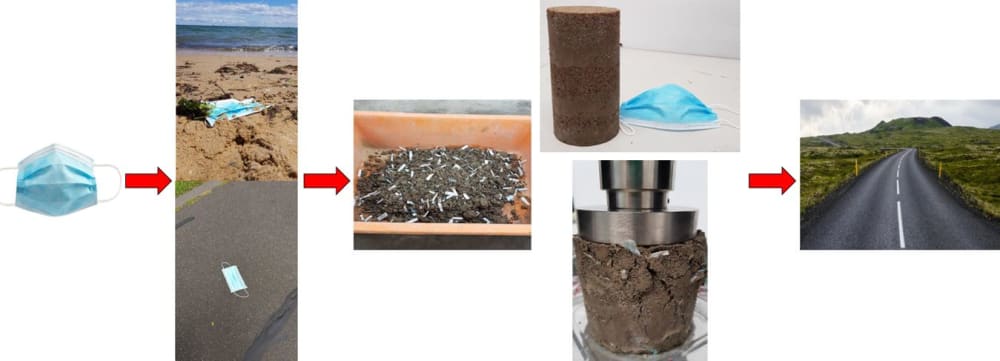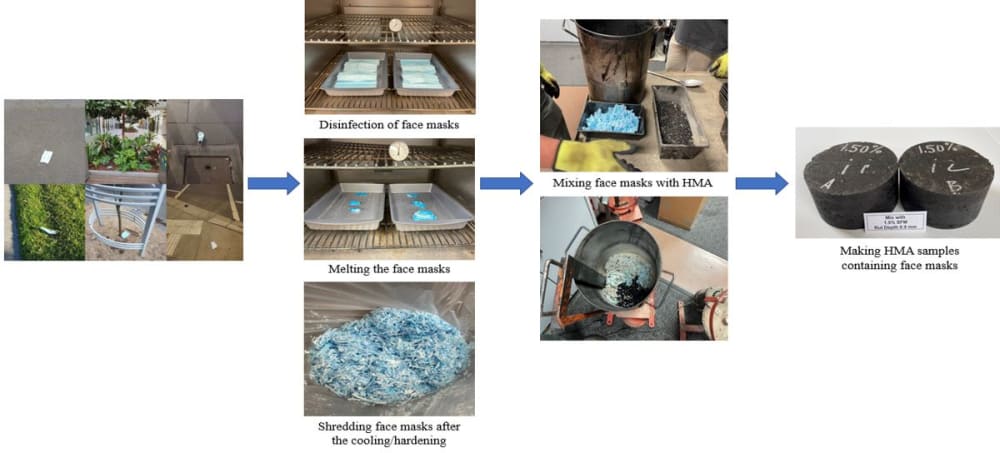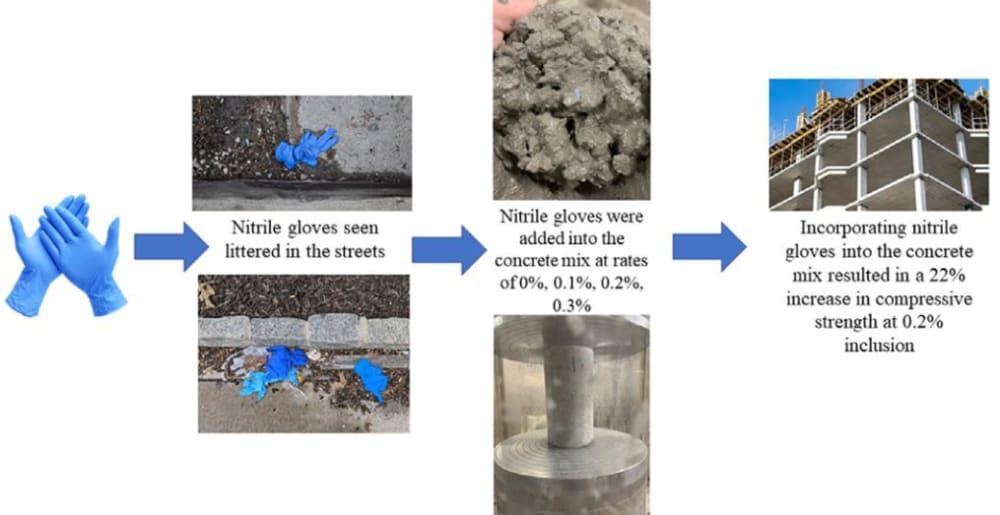The use of PPE has increased dramatically during the COVID-19 pandemic, with an estimated 6.8 billion (approximately 206,470 tonnes) disposable face masks, as an example, being used each day globally. The demand is expected to increase at a compounded annual rate of 10.6%-11.2% until 2027 at least. The global demand for isolation gowns is also expected to grow by 12.8% and is set to exceed US$2.65 billion by 2025. The generated PPE wastes can be spotted everywhere, littered or blown up into the parks and streets, or blown into gutters and washed down the drain, impacting our waterways and wildlife. PPE wastes are currently either sent to landfills or incinerated. The most severe effect is that many PPE wastes can find their way to rivers and oceans, threatening marine life and, consequently, human life. Therefore, we urgently need an innovative solution for the ever-growing pile of generated PPE wastes to address the severe threats as this issue will remain even after the pandemic is over.
On the other hand, the civil and construction industry consumes massive amounts of natural resources and energy. The industry is a significant contributor to carbon footprints worldwide, contributing to 39% of the global carbon footprints. With the effects of climate change contributing to a rapidly diminishing environment for human life, more sustainable practices are humanity’s only hope for maintaining a liveable climate for future generations. Traditional construction practices are known for being highly wasteful. Therefore, more efficient and practical ways of engaging sustainable practices, especially for construction and industry practices, will significantly improve economic and environmental potential, benefitting overall cost factors by utilising and maximising resources, reducing solid waste materials which are otherwise stagnant in landfills, and moving towards green construction practices. Finding novel and low-carbon footprint solutions in a bid to tackle the generation of huge amounts of waste materials, including PPE wastes, can create a future construction with energy-efficient, resilient, smart and sustainable infrastructures. Thus, this industry has real potential to play a significant role in transforming this waste into a valuable resource. These will also lead to achieving the UN Sustainable Development Goals (SDGs). Several industry partners have expressed their interest in implementing our technology and the outcomes of our research for civil and construction applications.
This entry seeks to develop a circular economy solution for repurposing various types of PPE wastes, such as face masks, gloves, and gowns, into high-end building products and road materials. This technology is straightforward and efficient for the construction industry to be adopted and can provide substantial economic and environmental benefits. It will not only improve the performance of building products and roads but also contribute to creating a circular economy for the wider community by incorporating the outcomes of this pioneering research and technology for large infrastructure projects. Thus, this technology endeavours to produce impactful outcomes through the development and translation of innovative, cutting-edge solutions that will eventually benefit the economy, environment, academia, the construction industry, and end-users.
Like this entry?
-
About the Entrant
- Name:Mohammad Saberian Boroujeni
- Type of entry:teamTeam members:1. Dr Mohammad Saberian Boroujeni, Vice Chancellor's Postdoctoral Fellow, Civil & Infrastructure Engineering, School of Engineering, RMIT University, Melbourne, Australia.
2. Professor Jie Li, Civil & Infrastructure Engineering, School of Engineering, RMIT University, Melbourne, Australia.
3. Shannon Kilmartin-Lynch, Indigenous Pre-Doctoral Research Fellow, Civil & Infrastructure Engineering, School of Engineering, RMIT University, Melbourne, Australia.
4. Dr Rajeev Roychand, Research Fellow, Civil & Infrastructure Engineering, School of Engineering, RMIT University, Melbourne, Australia. - Patent status:none








